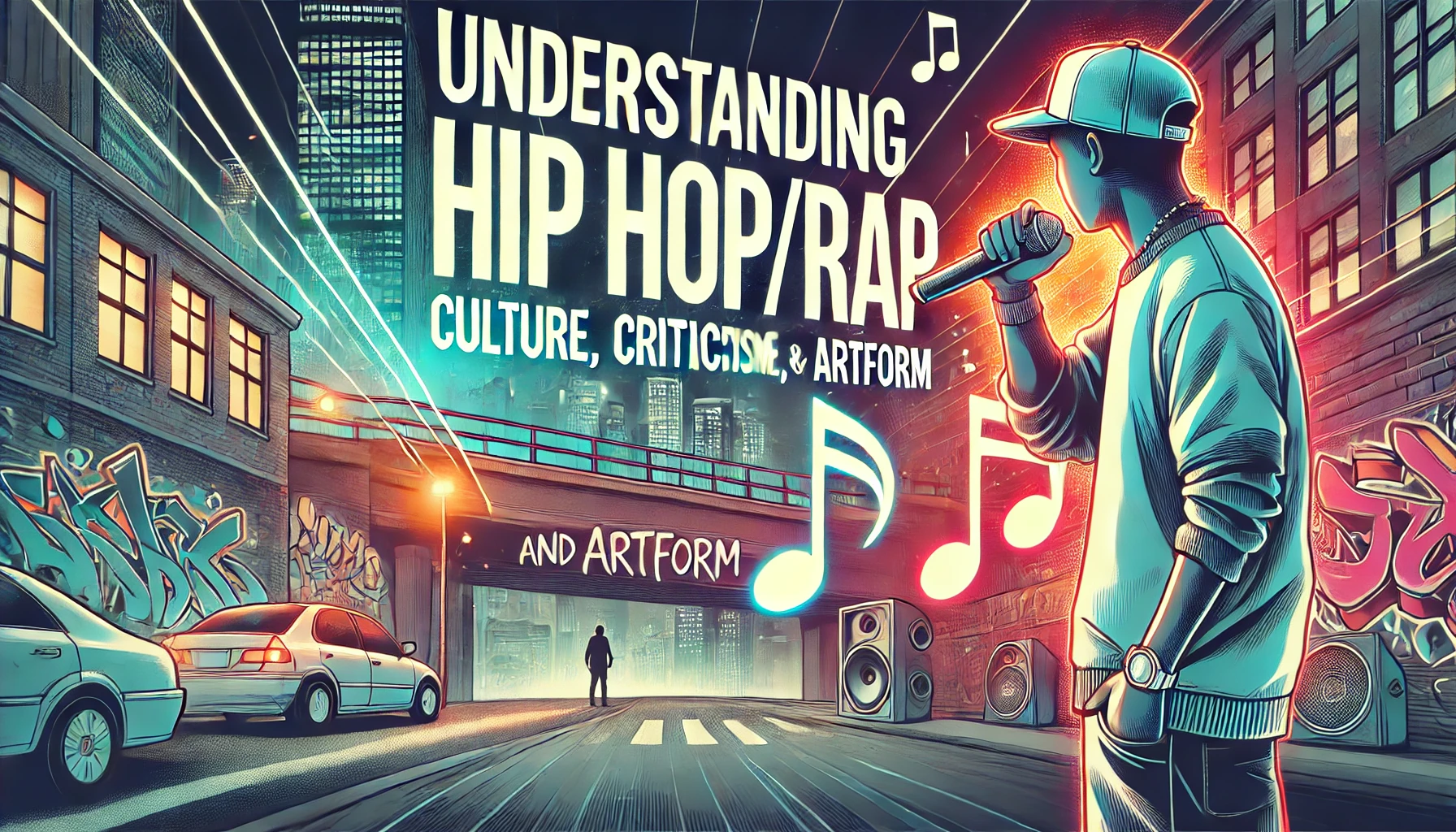As a rapper, one of the biggest challenges I face after introducing myself is explaining Hip Hop culture. There often seems to be a misunderstanding of the culture, art form, and music—especially among those who are not directly involved in it. In this article, I aim to clarify what Hip Hop culture is, discuss why it sometimes draws criticism, and emphasize that it is not monolithic. Hopefully, this will help bridge the divide between those who are within Hip Hop culture and those who are on the outside looking in.
What is Hip Hop/Rap?
The terms “Hip Hop” and “rap” are often used interchangeably, and most people generally know what you mean when you say either one. However, it’s important to understand that “Hip Hop” is actually the overarching culture, while “rap” is one of its core elements. Traditionally, Hip Hop includes five key elements:
Emceeing (Rapping)

DJing (Producing)

B-boying (Breakdancing)

Graffiti Art

Knowledge

Rapping is usually at the forefront of most Hip Hop songs, which leads many to associate the entire culture solely with rap. However, the other elements—such as DJing, dancing, graffiti, and knowledge—are just as vital to Hip Hop culture. Their influence can be heard, seen, and felt in a variety of ways, depending on the artist or the particular style of Hip Hop.
Countering the Criticism of Hip Hop
A large portion of Hip Hop’s criticism stems from its lyrical content. This criticism can be understandable, as certain Hip Hop songs highlight themes such as violence, sexuality, or criminal behavior. However, this reflection often mirrors the reality of the communities where Hip Hop first originated—primarily underprivileged Black and Latino neighborhoods in the United States. When rappers include violent or explicit scenarios in their lyrics, they’re often describing the day-to-day struggles they see or experience in these communities.
This is not meant to excuse violence or any kind of destructive behavior. Instead, it is a reminder that Hip Hop frequently serves as a platform to illustrate systemic problems such as generational poverty, crime, and social inequity. If we, as a society, truly want to curb these negative themes in rap lyrics, we must first address and resolve the underlying issues that breed them—namely, poverty, discrimination, and lack of opportunity in lower-income neighborhoods.
Not all HipHop/rap is violent or has inappropriate themes
Hip Hop began as a creative outlet for marginalized youth in the Bronx, but it has since become a global phenomenon that transcends borders, backgrounds, and ethnicities. You do not have to be Black or Latino to participate in Hip Hop culture or enjoy rap music. Whether you are from an urban city, the suburbs, or a rural area, Hip Hop can appeal to you in some way.
Moreover, not all rap focuses on “negative” themes. Like any genre, Hip Hop has a wide range of styles, subgenres, and subject matter. If you enjoy street narratives and gritty stories, you might gravitate toward gangster rap. If you’re more into melodic flows or rap that reflects personal experiences, there is a whole world of artists who explore love, faith, social justice, or everyday struggles. Because the internet has made it easier than ever to find new music, you can almost certainly discover a rapper who resonates with your experiences or tastes.
It’s important to remember that just because you dislike one rapper or one type of Hip Hop music, it doesn’t mean the entire culture isn’t for you. The best approach is to respect the artist’s expression, acknowledge that it may not be your cup of tea, and explore other corners of Hip Hop that might appeal to you.
Conclusion:
Hip Hop/Rap is much more than just music; it’s a vibrant culture with deep roots in marginalized communities and a dynamic global reach. Grounded in the five elements—rapping, DJing, breakdancing, graffiti art, and knowledge—Hip Hop offers a powerful vehicle for storytelling, self-expression, and social commentary. While some rap lyrics can be graphic or violent, these themes often reflect the realities of the neighborhoods from which many rappers come. On the other hand, countless subgenres and styles within Hip Hop focus on melodic, introspective, or socially conscious topics.
Ultimately, Hip Hop has something to offer everyone, regardless of background or personal tastes. If you happen to dislike one artist or one style, keep looking—there is likely a rapper whose message and sound resonate with you. As an artist myself, my music often focuses on social issues and personal topics like relationships, and I understand it may not be for everyone. That’s the beauty of Hip Hop: its diversity encourages everyone to find their own place within the culture. If we collectively want to see less violence in rap lyrics, we must address the root causes of that violence. Until then, Hip Hop will continue to serve as a mirror, reflecting both our struggles and our hopes for a brighter future.

